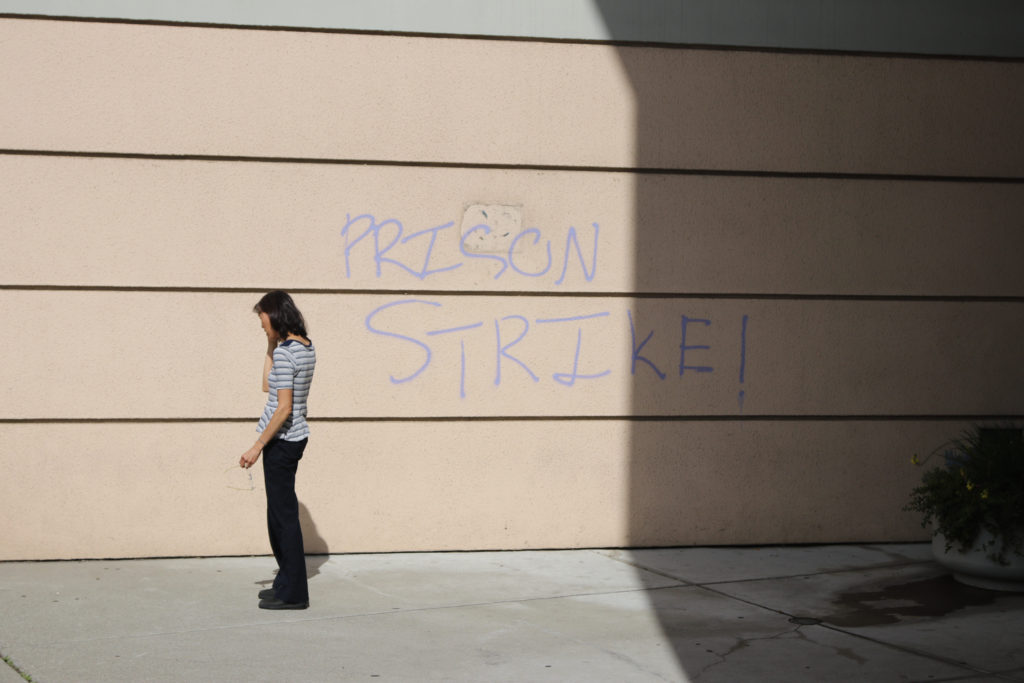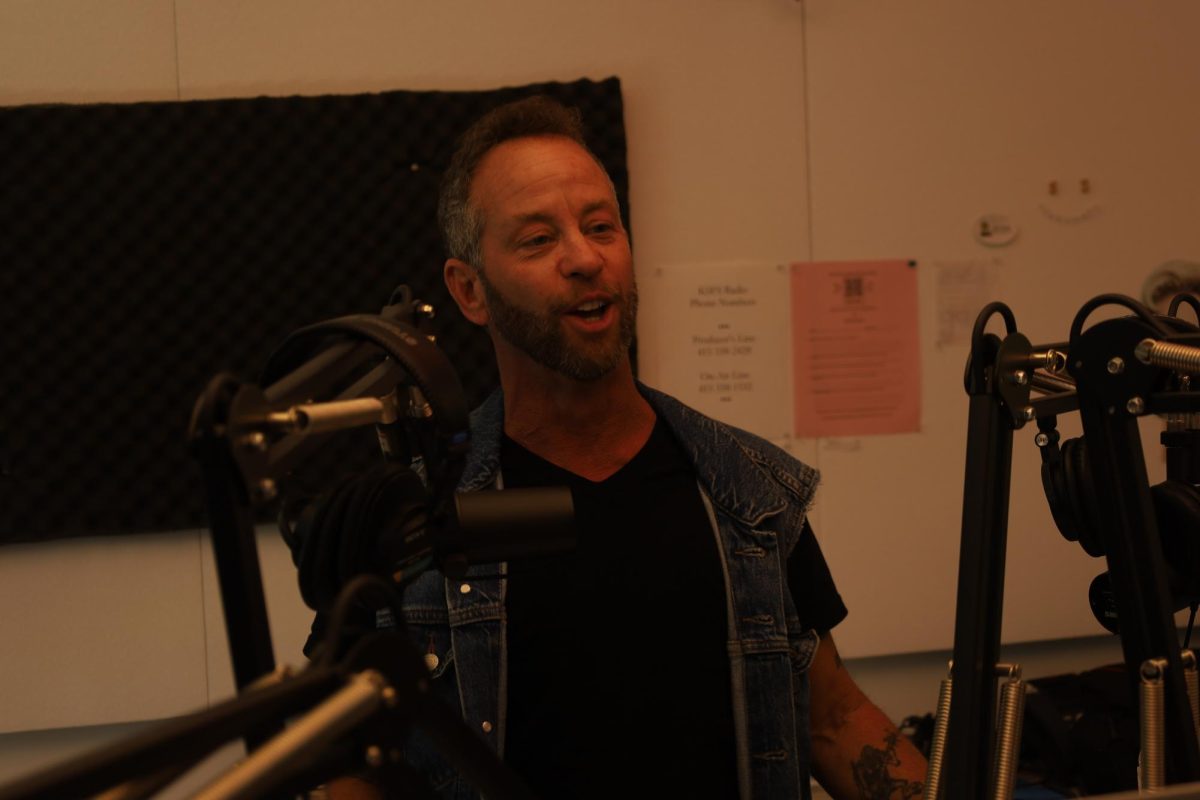Profanity-laden graffiti denouncing the demolition of student housing units appeared overnight last Wednesday at the construction site located at the Tapia Drive Triangle and the Humanities Building.

The demolition is clearing space to build the $81 million Liberal and Creative Arts Building at Tapia Drive and a mixed-use student housing facility on Holloway Avenue near 19th Street.
Most of the graffiti was focused at the site of the future LCA Building, but Campus Police Chief Jason Wu said graffiti was also spotted on the east exterior wall of the police bicycle path and the southside humanities building.
The unknown suspects spray-painted thin, silver and black words on the tarp-covered fence surrounding the site of the LCA Building. The messages read: “What happened to love thy neighbor?” “What about the houseless students?” “Prison Strike,” “F*** Zionism,” “F*** Wong,” and “Obey Students.”
The graffiti was painted over later that day at a cost of $3,000, according to Wu.
The graffiti appeared on the third day of the 2018 fall semester, about a week after McCarthy Construction Co. began tearing down the student housing units at Tapia Drive and Font Street.
Similar messages were also written in chalk on the concrete path in front of the J. Paul Leonard Library.
Messages at both sites referenced the nationwide strike to reform prison conditions and the issue of student homelessness.
The messages in front of the library provided a link to a radical student-run online newspaper and creative space, according to its about page. The publisher of this wordpress site did not respond to this reporter’s request for an interview.
The anger over student housing and the construction project that was expressed in the graffiti didn’t seem to resonate with students approached by the Xpress.
Shan Dobaria, a 23-year-old physics major, said he didn’t notice the graffiti until it was pointed out.
“It looks like they had a spray can and some time,” Dobaria said. “I used to tag back in Southern California, so I get it. But they could have done it better.”
He said whoever was mad enough about tearing down old student housing should realize that this is just the first step in a larger project to renovate campus and Park Merced.
Some students who did notice the graffiti said the message was too vague to understand.
Luca Tantari, a 25-year-old philosophy major, said he saw the graffiti while entering campus.
“I saw one of the [campus grounds] workers repainting the wall,” Tantari said. “And [the graffiti] was not artistic and did not have a clear political message. It seemed like random things written on a wall by some kids.”
Although she refused to speak to the content of the graffiti, Monica DiLullo, Associated Students Inc. vice president of Facilities and Services, said that providing students with affordable housing is an issue the college needs to address.
“Gaining 500 beds of student housing can never be looked at as a bad thing.” she said. “However, the question that remains unanswered is at what cost to students? If we are looking at upwards of $1,600 a month for a bed, is that really increasing student access to housing?”
She said there needs to be more discussions about how to address student homelessness by providing equitable opportunities for students.
SF State has a wait list of more than 2,000 students who want to live on campus but can’t be accommodated due to lack of housing, according to a May 2018 SF Examiner interview with Vice President of University Enterprise Jason Porth.
The project will provide housing for 400 more students than the university can currently accommodate, said Porth.
According to college President Leslie Wong’s campuswide email sent out on Monday, Aug, 27, the LCA building will be the first academic building constructed in 25 years and will house the department for broadcast and electronic communication arts (BECA) once construction is complete in 2020.
In the email, Wong said the LCA Building is being constructed in tandem with the mixed-use student housing facility near 19th Avenue.
The mixed-use building will be located along Holloway Avenue across from the Administration Building and will provide the campus with 570 beds of student housing in 170 apartment style-units.
“In sum, both building sites provided 54 apartment units,” Porth said. “Thus, the net gain of additional student housing is significant, and will provide approximately 116 units more than we had before.”







A.Goodman • Sep 3, 2018 at 6:42 pm
Funny the follow up on academic personal parking priveledges
All part of the U.Corp “master-$-plan”
Green-$-Greed redefined as expansionism and private personal needs by the administration…
Aaron Goodman • Sep 2, 2018 at 5:49 pm
SFSU xpress is clearing comments / comments left that do not support their goals are deleted. Pay attention students faculty and staff….
Phil Haggardy • Sep 1, 2018 at 7:01 pm
Good old SFSU never misses a chance to be anti-Semitic I hope if they get caught they are expelled, racist little bastards..
Aaron Goodman • Sep 1, 2018 at 9:44 am
Re-read those lines – “However, the question that remains unanswered is at what cost to students?” what costs to neighbors, what costs to the city as a whole, when demolition of sound housing takes precedence over essential infill, and other less damaging and more sustainable options/solutions.
Than read J.Porth’s “Thus, the net gain of additional student housing is significant, and will provide approximately 116 units more than we had before.” is a gain always a “gain” is it purely financial to garner profit, or is it based on a real study of impacts and needs? Does transit, parking and facilities master-planning take precedence over student needs. Is the U.Corp too big for its britches, and is CSU an over-sized behemoth that needs to be scaled back? Recall that the SFSU-CSU “masterplan” was focused on enlarged student population, not addressing sincerely the impacts it created nor impacts on the community in terms of lost essential housing stock in D7. The loss of stonestown (UPN) and Parkmerced blocks (UPS) has never been quantified by the city and county of SF in terms of loss of units and displacement of seniors and families, and working class citizens. Nor has adequate EIR transportation studies been done to address SFSU-CSU growth and impacts. (See 19th Ave Masterplan, which was not an enforceable document on impacts, only a blue print that ignored the direct connection to Daly City BART, and allowed Parkmerced to dog-leg into Parkmerced vs. directly connecting to mass-transit systems, thus leaving students at the mercy of the roadways)
The effects of the loss of sound rent-controlled housing and the impacts of demolition are direct carbon impacts when you destroy buildings and re-grade and re-plant a site, and community displacement… due to lacking controls on SFSU-CSU property in terms of rent-control and new buildings (See Costa-Hawkins and Palmer vs. 6th)
There is no excuse for graffiti, what should be the result of these issues is communication between the SFSU-CSU and the students, faculty, staff and surrounding community on how best to approach issues such as housing, transit and loss of prior public amenities (Mashouf Center site) to SFSU-CSU’s needs to “grow” regardless of impacts.
Many new students arrived in the last weeks, do not comprehend the full story and issues, but will be directly impacted by the dual proposed sites and future Parkmerced growth and cost impacts. To get SFSU-CSU to the table to discuss these issues in depth, and possibly reduce the impacts by eliminating the projects that directly impact affordable housing sites, (Tapia and Varela projects) should be discussed and options considered that focus on the existing prior campus boundaries, not just expansionism and rampant sprawled urban renewal that typically ignores the existing community impacts.